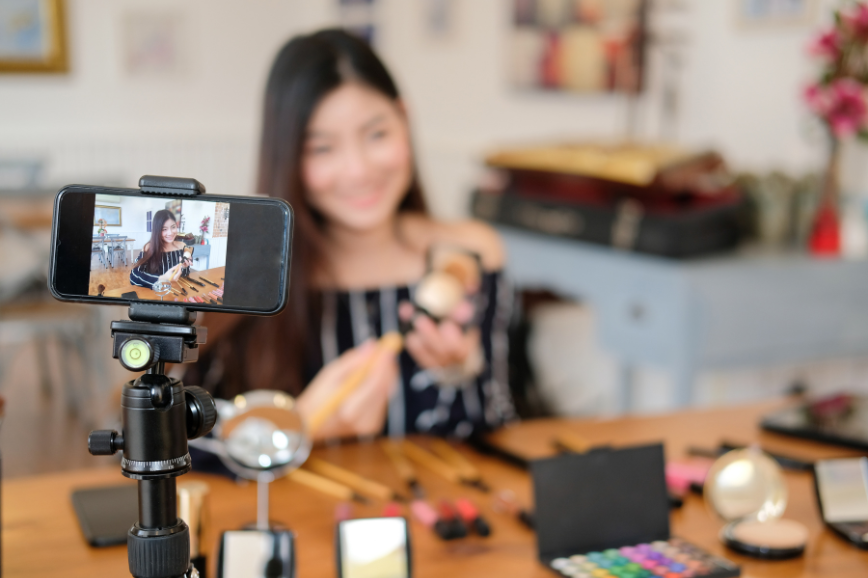Retention vs. Acquisition: Where Should Your Marketing Dollars Go?

Marketing has its own version of a “Chicken or the Egg” problem. Which comes first, finding new customers, or nurturing the ones you already have?
Every business leader faces this same question, and the answer isn’t always obvious. While both are essential for a healthy business, the specific balance of your investment can dramatically change your trajectory.
We’re going to break down this great debate, help you understand the pros and cons of each, and show you how to find the right blend for your brand.
What is New Customer Acquisition?
New Customer Acquisition is the process of getting new customers to try your product or service for the first time. It’s all about making a great first impression and getting them to commit.
- Common Channels: Acquisition is powered by strategies such as paid ads on platforms like Meta, Taboola, and Google, as well as influencer marketing and SEO, which put you at the top of search results.
- Pros: Acquisition is the engine of growth. It’s how you scale your business, enter new markets, and expand your reach. It provides a steady stream of new revenue and keeps your business from becoming stagnant.
- Cons: It’s expensive to do right. The cost for a new customer is significantly higher than the cost of retaining existing ones.
- Pro Tip: Acquisition can be a high-effort, low-yield game. It requires constant testing and optimisation to find the right people at the right time. Don’t be afraid to pull the plug on underperforming campaigns to focus your budget on what’s working.
What is Customer Retention?
Customer Retention is the practice of keeping the customers you already have. This is where the long-term relationship building happens. It’s about turning a single purchase into a second, a third, a fourth, and a lifetime of loyalty. The goal isn’t just about building a customer list but about cultivating a loyal brand community.
- Common Channels: Retention strategies involve the use of powerful campaigns driven through email, SMS, and app push channels, alongside a healthy mix of paid media campaigns on social media such as Meta, X, and Reddit, not to mention your customer service.
- Pros: Retention is often more cost-effective. Happy retained customers are not only a source of stable revenue, but also your best brand advocates. They’ll tell their friends, leave positive reviews, and organically drive new customers for you. Their Customer Lifetime Value (LTV) can be HUGE.
- Cons: You can’t scale a business on retention alone; you still need a steady stream of new customers to fuel the first. Focusing too much on retention can also lead to a static customer base, limiting your total growth.
- Pro Tip: Retention is not a passive game! You have to engage with your customer base and add value actively. Do it right? Your customers become your brand ambassadors, converting their friends and family. Do it wrong? They’ll run away faster and further.
Metrics that Matter: The numbers behind the decisions.
To make data-driven decisions, you need to understand these core metrics.
- Customer Acquisition Cost (CAC): The total cost of sales and marketing needed to acquire a single customer.
- Customer Lifetime Value (LTV): The total revenue a single customer is expected to generate over their entire relationship with you.
- Conversion Rate: The percentage of visitors to your site that end up doing what you want them to do.
- Retention Rate: The percentage of customers you’ve kept over a specific period.
- Churn Rate: The percentage of customers who stop doing business with you over a specific period.
- Pro Tip: Your LTV should ALWAYS be higher than your CAC. This is the golden rule of profitability. If you’re spending more to get a customer than they’ll ever spend with you, then you’re going to have a bad time!
When to Focus on Acquisition
There are clear phases in a business’s life cycle where acquisition should be the primary focus.
- Early Stage Startups or New Product Launches: When you’re just starting out, you have no customers to retain. Your number one priority is to introduce your brand, product, or service to the world and establish your customer base.
- Entering New Markets: If you’re an established business already and are expanding into a new country or demographic, you’re essentially a startup again. An aggressive acquisition strategy is key to building your new customer base.
- Growth Mode: When you have a proven market fit product and a healthy LTV, it’s time to pour some petrol on the fire and get things moving. An aggressive acquisition strategy, powered by high-performing paid ads and organic channels, can help you scale quickly.
When to Focus on Retention
While acquisition is the growth engine, retention is the stability and long-term profitability that keeps the engine running smoothly.
- Established Customer Base: If you’ve been in business for a while, it’s often more efficient to invest in nurturing your existing customers than constantly chasing new ones.
- High Acquisition Cost Market: In highly competitive markets, or where a market is just overly saturated, a strong retention strategy is crucial to maximising the LTV of each customer.
- Subscription-Based Model: For companies that rely on subscription-based revenue, retention is a matter of survival. Every customer you lose is a direct hit to your bottom line, making retention strategies a top priority.
- New Product Launches to Existing Customers: Sometimes, retention can drive acquisition. Cross-selling a new product to your existing customer base is one of the most efficient ways to launch something smoothly. Especially if this customer base already loves and trusts you!
Finding the Sweet Spot: How to Split Your Budget
Finding the perfect split isn’t an exact science; it’s a dynamic process of analysis and adjustment.
- Know Your Metrics: Start by looking at your data. What is your current CAC vs LTV? What is your churn rate? Why did that customer abandon their cart 17 times at 3:11 am on Sunday? The answers to these questions will reveal where you’re strong, and where you’re bleeding money.
- Know Your Objectives: If your goal is aggressive market share growth, a heavier acquisition budget might make more sense. If your goal is sustainability, a more balanced approach could be better.
- Build Your Feedback Loop: Your retention strategy should inform your acquisition strategy. By understanding why your most loyal customers are here, you can build better audiences for your acquisition campaigns, finding more people just like them!
- Pro Tip: The best strategies are never static. The ratio of your budget allocations should change as your business and objectives evolve. What works for a startup won’t work for a mature company, and vice versa. Continually test and refine your budget split to match your current needs!
Why GeistM is the Perfect Partner
This isn’t a “chicken or the egg” question; it’s a “how and when” question. And that’s where a partner like GeistM becomes invaluable. We don’t believe in a one-size-fits-all approach; we believe in a holistic, data-driven strategy that makes every dollar and cent count.
- Holistic Strategy: We understand that acquisition and retention are two sides of the same coin. We build comprehensive strategies that integrate both, ensuring everything is balanced and effective across the entire customer journey.
- Data-Driven Decisions: Our team of experts meticulously analyzes the CAC, LTV, and other key metrics to make informed decisions about allocations. We’ll never blindly throw money at a campaign hoping for the best. Everything we do is backed by a metric that matters.
- The Perfect Partner: GeistM is the perfect partner for this because we don’t force you into one camp. We are flexible, agile, and capable of building custom strategies that perfectly match your business’s needs, whether that’s aggressive growth, sustainability, or a mix of both.
- Pro Tip: The best strategies are never static. The ratio of your budget allocations should change as your business and objectives evolve. What works for a startup won’t work for a mature company, and vice versa. Continually test and refine your budget split to match your current needs!
The battle between retention and acquisition isn’t a battle at all. It’s a dance. And with the right partner, you can master the steps and build a brand that not only grows fast, but also lasts. So contact GeistM today, and we’ll take care of everything for you!



